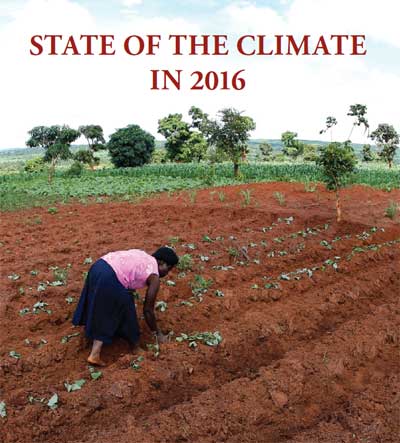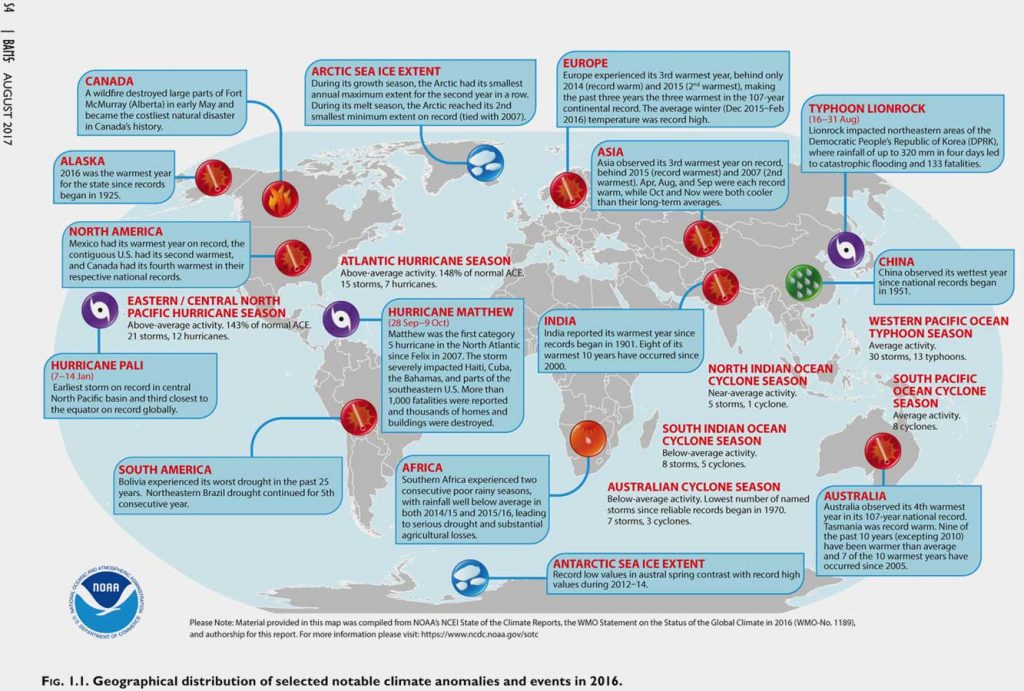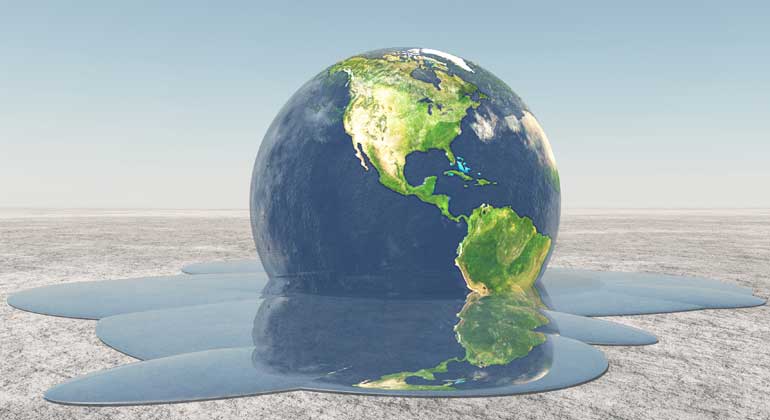Last year marked the 3rd consecutive year of record warmth
International report confirms 2016 was warmest year on record for the globe
The 27th annual State of the Climate report has confirmed that 2016 topped 2015 as the warmest year in 137 years of record keeping. The report found that most indicators of climate change continued to follow trends of a warming world, and several, including land and ocean temperatures, sea level and greenhouse gas concentrations in the atmosphere broke records set just one year prior. Last year’s record heat resulted from the combined influence of long-term global warming and a strong El Nino early in the year.
This annual check-up for the planet, led by researchers from NOAA’s National Centers for Environmental Information, is based on contributions from more than 450 scientists from nearly 60 countries. It provides a detailed update on global climate indicators, notable weather events and other data collected from land, water and space. It’s published as a special supplement to the Bulletin of the American Meteorological Society.
Notable findings from the report include:
-
Greenhouse gases were the highest on record. Major greenhouse gas concentrations, including carbon dioxide (CO2), methane and nitrous oxide, rose to new record-high values in 2016. The 2016 average global CO2 concentration was 402.9 parts per million (ppm), an increase of 3.5 ppm compared with 2015 and the largest annual increase observed in the 58-year record.
-
Global surface temperature was the highest on record. Aided in part by the strong El Nino early in the year, the 2016 combined global land and ocean surface temperature was record-high for a third consecutive year, according to four global analyses. The increase in temperature ranged from 0.81–1.01. degrees F (0.45°–0.56°C) above the 1981-2010 average.
-
Average sea surface temperature was the highest on record. According to four independent datasets analyzed, the record-breaking globally averaged sea surface temperature for 2016 was 0.65–0.74 degrees F (0.36–0.41 degrees C) higher than the 1981–2010 average and surpassed the previous mark set in 2015 by 0.02–0.05 degrees F (0.01–0.03 degrees C).
-
Global upper-ocean heat content neared record high. Heat in the uppermost layer of the ocean, the top 2,300 feet (700 meters), saw a slight drop compared to the record high set in 2015. The findings are consistent with a continuing trend of warming oceans.
-
Global sea level was the highest on record. The global average sea level rose to a new record high in 2016, and was about 3.25 inches (82 mm) higher than that observed in 1993, when satellite record-keeping for sea level began.
-
Arctic sea ice coverage was at or near record low. The maximum Arctic sea ice extent (coverage) reached in March 2016 tied last year as the smallest in the 37-year satellite data record, while the minimum sea ice extent in September tied 2007 as the second lowest on record.
-
Tropical cyclones were above-average overall. There were 93 named tropical cyclones across all ocean basins in 2016, above the 1981-2010 average of 82 storms. Three basins – the North Atlantic and Eastern and Western Pacific basins – experienced above-normal activity in 2016.
Download by Chapter:
- Executive Summary
- List of Authors, Table of Contents, and Abstract
- Introduction
- Global Climate
- Global Oceans
- The Tropics
- The Arctic
- Antarctica
- Regional Climates
- Appendix I: Relevant Datasets and Sources
- Acknowledgments, Acronyms and Abbreviations, and References










